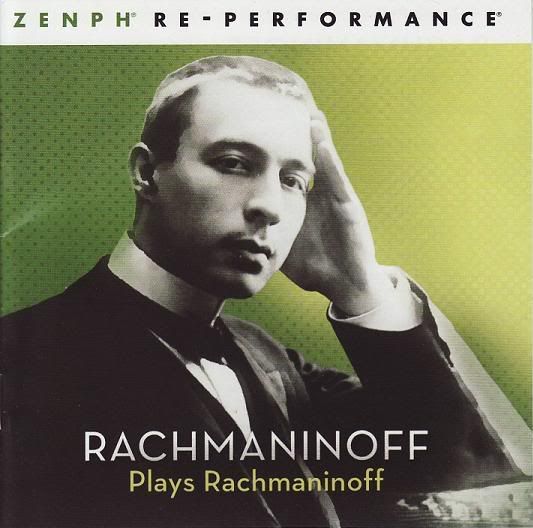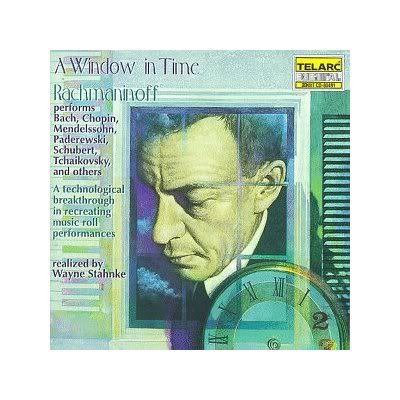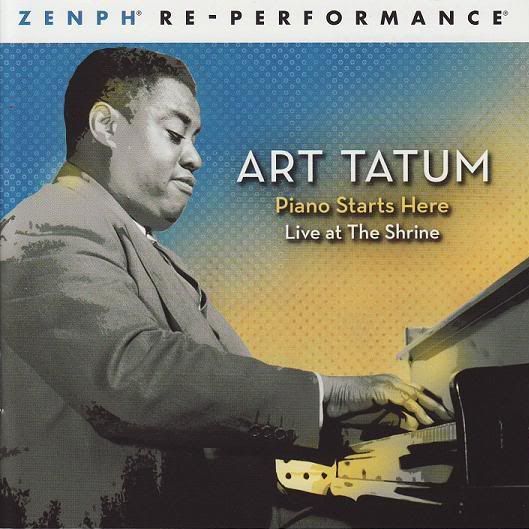What music lover hasn't fantasized occasionally about taking a time trip to hear an exceptional performer of the past in person at a real, live concert?
Time travel is still on scientists' to-do list, but by golly, technology has begun to give us a pretty good approximation.
A few years ago, Telarc offered us modern recordings of Sergei Rachmaninoff's pianism. Rachmaninoff made a number of piano-roll transcriptions of his playing. A sound engineer found that the piano rolls were actually an excellent recording medium -- they were just a lousy playback source. Using computer technology and a new, high-tech system for controlling the keyboard of a modern concert grand, the label gave us newly recorded versions of Rachmaninoff's playing.
It's unlikely we will get any more such marvels from Telarc, which has been absorbed into the very commercial Concord Music Group. But a new company, Zenph, has stepped in with its own new-old recordings.
Zenph uses a different, and presumably less expensive, technology to achieve similar results. Here's how they describe it:
Zenph Studios takes audio recordings and turns them back into live performances, precisely replicating what was originally recorded. The Zemph software-based process extracts every musical nuance of a recorded performance, and stores the data in a high-resolution digital file. These re-performance files contain every detail of how every note in the composition was played, including pedal actions, volume, and articulations -- all with micro-second timings.
The re-performance files are played back on a real acoustic piano fitted with sophisticated computers and hardware, letting the listener "sit in the room" as if he or she were there when the original recording was made. The re-performance is then recorded afresh, using the latest microphones and recording techniques ... .
Zenph's sonic updating of an Art Tatum album contains three pieces recorded in 1933 and 10 others recorded in 1949. They sound as "present" as any jazz piano tracks laid down last week.
Tatum's fans, of whom I'm one, now have a new kind of treat -- hearing Tatum's playing just as if he were here now. He is universally considered one of the greatest jazz keyboard artists of all time, if not the greatest.
His style is (and where the Zenph re-recording is concerned, I use the present tense deliberately) unique. Generally it's based on the stride-piano format that was popular in his early years, but that's only a launching pad. From there he goes in almost every direction imaginable, and some that are unimaginable. The melody line is broken into fragments -- a kind of musical cubism -- and diversions, played with trans-human speed and articulation. His imagination is unlimited and prolific. Even while you are trying to absorb one astonishing effect, he's moved on to another.
These tracks were played and recorded on the stage of the Shrine Auditorium in Los Angeles, the exact location of the 1949 concert. So even the hall acoustics are authentic, just what the audience heard at the time.
Zenph has given us more Rachmaninoff "live." Rachmaninoff's later fame as a composer has eclipsed the fact that he was regarded as a pre-eminent piano virtuoso in his day.
Tatum's fans, of whom I'm one, now have a new kind of treat -- hearing Tatum's playing just as if he were here now. He is universally considered one of the greatest jazz keyboard artists of all time, if not the greatest.
His style is (and where the Zenph re-recording is concerned, I use the present tense deliberately) unique. Generally it's based on the stride-piano format that was popular in his early years, but that's only a launching pad. From there he goes in almost every direction imaginable, and some that are unimaginable. The melody line is broken into fragments -- a kind of musical cubism -- and diversions, played with trans-human speed and articulation. His imagination is unlimited and prolific. Even while you are trying to absorb one astonishing effect, he's moved on to another.
These tracks were played and recorded on the stage of the Shrine Auditorium in Los Angeles, the exact location of the 1949 concert. So even the hall acoustics are authentic, just what the audience heard at the time.
Zenph has given us more Rachmaninoff "live." Rachmaninoff's later fame as a composer has eclipsed the fact that he was regarded as a pre-eminent piano virtuoso in his day.

These selections were recorded between 1921 and 1942, but they also sound completely up to date. They are all rather short, since they were intended to fit on a side of a 78 rpm record, and some are popular bits of fluff from back in the day -- including Rimsky-Korsakoff's dreaded "Flight of the Bumblebee." But even in the lightweight stuff, you can appreciate his sensitive technique.
Five selections are of Rachmaninoff playing his own compositions. I agree with the annotator: the style is a long way from that of modern Rachmaninoff interpreters, who tend toward hyper-drama, gravitas, depression, lots of keyboard pounding and use of the sustaining pedal. At least for these pieces, the composer himself spun out the notes calmly and fluidly. At times you could think he was playing Debussy.
Next, modern re-recordings of vintage orchestra performances? Wouldn't that be something. Elgar conducting his own symphonies, Beecham and Barbirolli in the 1930s ... I might even get over my prejudice against Toscanini if I could hear how his orchestra really sounded, rather than through the hideous recordings RCA gave him.
For all I know, it might be technically feasible, although the cost would make any producer blanch. Meanwhile, let's have more of the great piano performances in modern sound.
Five selections are of Rachmaninoff playing his own compositions. I agree with the annotator: the style is a long way from that of modern Rachmaninoff interpreters, who tend toward hyper-drama, gravitas, depression, lots of keyboard pounding and use of the sustaining pedal. At least for these pieces, the composer himself spun out the notes calmly and fluidly. At times you could think he was playing Debussy.
Next, modern re-recordings of vintage orchestra performances? Wouldn't that be something. Elgar conducting his own symphonies, Beecham and Barbirolli in the 1930s ... I might even get over my prejudice against Toscanini if I could hear how his orchestra really sounded, rather than through the hideous recordings RCA gave him.
For all I know, it might be technically feasible, although the cost would make any producer blanch. Meanwhile, let's have more of the great piano performances in modern sound.





No comments:
Post a Comment